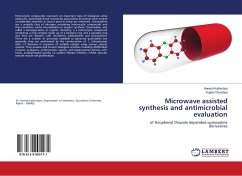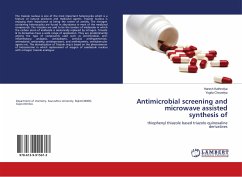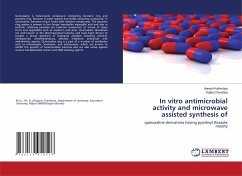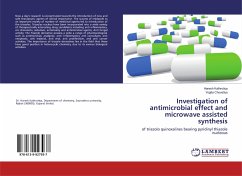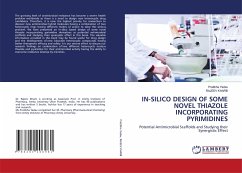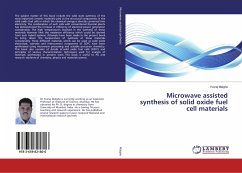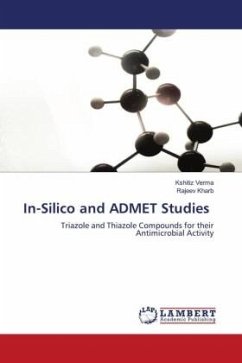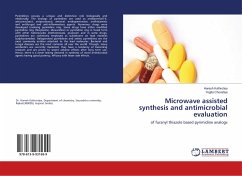
Microwave assisted synthesis and antimicrobial evaluation
of furanyl thiazole based pyrimidine analogs
Versandkostenfrei!
Versandfertig in 6-10 Tagen
27,99 €
inkl. MwSt.

PAYBACK Punkte
14 °P sammeln!
Pyrimidines occupy a unique and distinctive role biologically and medicinally. The analogs of pyrimidine are used as antibacterial1-4, anticonvulsant, antiprotozoal, antiviral, antihypertensive, antihistaminic and antifungal and anti-inflammatory agents. Numerous drugs were developed involving pyrimidine ring. Some drugs have either modified pyrimidine ring (flucytosine, Idoxuridine) or pyrimidine ring in fused form with other heterocycles (methotrexate, prazocin) and in some drugs, pyrimidines are commonly employed as substituent on lead moieties (sulphonamides). Halogenated pyrimidines and a...
Pyrimidines occupy a unique and distinctive role biologically and medicinally. The analogs of pyrimidine are used as antibacterial1-4, anticonvulsant, antiprotozoal, antiviral, antihypertensive, antihistaminic and antifungal and anti-inflammatory agents. Numerous drugs were developed involving pyrimidine ring. Some drugs have either modified pyrimidine ring (flucytosine, Idoxuridine) or pyrimidine ring in fused form with other heterocycles (methotrexate, prazocin) and in some drugs, pyrimidines are commonly employed as substituent on lead moieties (sulphonamides). Halogenated pyrimidines and amino pyrimidines are the most commonly entities attached to the lead molecules. Bacterial and fungal diseases are the most common all over the world. Though, many antibiotics are currently marketed, they have a tendency of becoming resistant and are prone to severe adverse effects after long term use. Hence, there is a never lasting demand in synthesis of novel antimicrobial agents having good potency, efficacy with lesser side effects.



